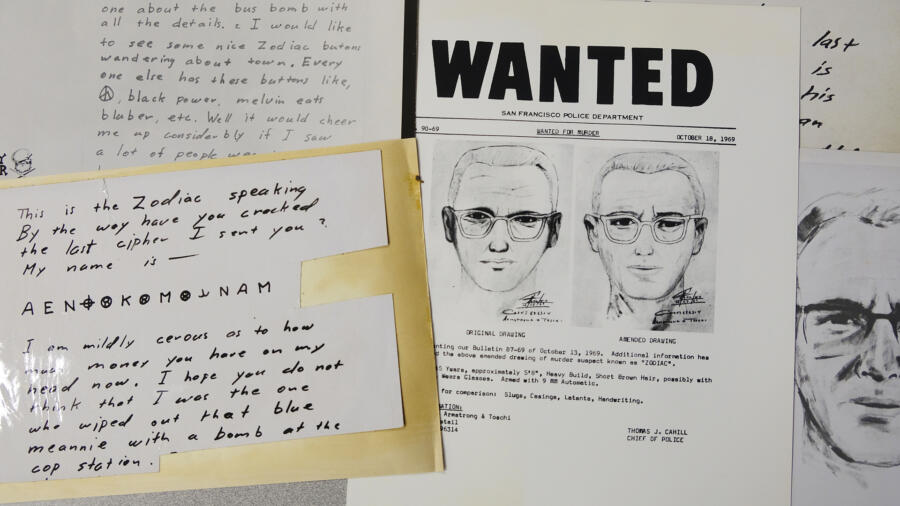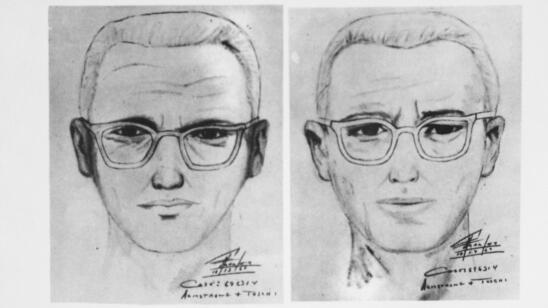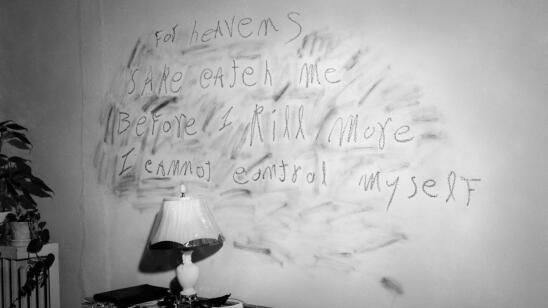Warning: The following contains disturbing descriptions of violence. Reader discretion is advised.
From the late 1960s to the early 1970s, the Zodiac Killer played a cunning game of cat and mouse. The serial murderer, whose identity remains unknown, sent more than 20 written communications to law enforcement and the media. Among the letters were four ciphers, a series of coded messages meant to taunt police and instill fear in the San Francisco Bay Area populace.
While civilians cracked the first Zodiac cipher within a week, it took 51 years for the next to be decoded. Now, two unsolved Zodiac ciphers remain and it’s possible the messages they contain could help identify one of America’s most prolific serial killers.
The Rise of the Zodiac
The 1960s marked an era of social change and counterculture in California’s Bay Area. Amid sporadic violent protests condemning war, racial injustice and suppressed free speech, hippies flocked to San Francisco, bringing with them idealistic messages of love and peace. But beneath the region’s flower power optimism, evil lurked.
[Stream Invisible Monsters: Serial Killers in America on A&E’s site and apps.]
Between December 1968 and October 1969, a lone perpetrator went on a killing spree, murdering five known victims (David Faraday, Betty Lou Jensen, Darlene Ferrin, Cecilia Shepard and Paul Stine) and attempting to kill two more (Michael Mageau and Cecilia Shepard). The unidentified serial killer, who has often been called America’s Jack the Ripper, sought his victims at night and mainly preyed on young couples in San Francisco, Napa County, Vallejo and Benicia. Among the dead was cab driver Stine. The killer shot him in the head at point-blank range, and then took his wallet, keys and part of the cabbie’s bloodstained shirt. Three teens witnessed the incident in progress and called police, who caught a glimpse of a white male fleeing the scene.
Eight months into his homicidal rampage, the killer began taunting police and Bay Area citizens with handwritten letters, including multiple messages written in secret code.
Communications From a Killer
On August 1, 1969, the Vallejo Times-Herald, San Francisco Chronicle and San Francisco Examiner received three nearly identical letters. The writer took credit for multiple Bay Area murders and claimed that he would “cruse [sic] around all weekend killing lone people in the night” if the media outlets didn’t print his messages on the front page of their newspapers. At the bottom of each letter, the writer drew a circle with a cross through it, a symbolic representation of the Zodiac.
Each letter also contained one-third of a 408-symbol cryptogram or cipher, a type of coded communication where letters of the alphabet are often scrambled or substituted for other letters and symbols. The killer alleged that the cipher contained his identity and sent a follow-up letter several days later. In it, he mocked the police and the FBI for not being able to decipher his cryptic message and referred to himself as the Zodiac. From that point on, he became widely known as the “Zodiac Killer.”
[Stream an episode of History’s Greatest Mysteries about the Zodiac Killer in the History App.]
Schoolteacher Donald Harden and his wife Bettye decoded the Z408, the Zodiac’s longest coded message, within a week. To crack the code, Bettye discovered two cribs, or words or phrases that might appear in the encrypted text. In this case, she thought “I” would be one and “kill” or “killing” might be another. Her hunches proved correct. “I like killing people because it is so much fun,” the cracked cipher begins. It then goes on to detail how the killer was collecting slaves for the afterlife, but fails to reveal his identity.
Zodiac Killer expert Tom Voigt examined the serial murderer’s ciphers in person, twice in 1998 and again in 2017 at the Vallejo Police Department. He’s the only civilian ever allowed into the Zodiac evidence rooms.
“Zodiac’s original cipher was rudimentary and not much different than the scene in A Christmas Story when Ralphie uses a secret decoder ring to decipher a message,” Voigt tells A&E True Crime.
The Zodiac sent three more ciphers: the Z340 on November 8, 1969; the Z13 on April 20, 1970; and the Z32 on June 26, 1970. The names of the different ciphers refer to the number of letters and symbols in each coded message.
“Cryptography was extremely popular post World War II. Secretly communicating went from being a war tactic to a form of entertainment for kids,” Voigt explains. “So, Zodiac would have grown up in the generation that enjoyed putting together secret messages.”
On December 5, 2020, a team of civilian codebreakers from the United States, Belgium and Australia cracked the Z340. “I hope you are having lots of fun in trying to catch me. I am not afraid of the gas chamber because it will send me to paradice [sic] all the sooner because I now have enough slaves to work for me,” the decoded message reads, without giving any insight into the killer’s identity.
The team submitted the deciphered message to the FBI, who confirmed their achievement.
“The FBI is aware that a cipher attributed to the Zodiac Killer was recently solved by private citizens,” the statement read. “The Zodiac Killer case remains an ongoing investigation for the FBI San Francisco Division and our local law enforcement partners.”
Many question why it took so long for a second Zodiac cipher to be decoded.
“For the 480 and 340, it would take several hours to create an alphabet/symbol conversion key and then plug the symbols into the grid message. They are not sophisticated codes that would take more than a day to create,” Michael Sechrest, an attorney and author of Zodiac Code: Solved, tells A&E True Crime. “After the 408 was easily solved, the Zodiac was challenged by a code expert. I believe his 340 cipher is a response to that challenge.”
According to Sechrest, the Zodiac made the Z340 more difficult by using more ciphertext symbols for each letter of the alphabet and also adding more “gibberish” content. The team that cracked the Z340 used a specialized decryption software and intuition to decipher the message. They sifted through hundreds of thousands of variations until a couple of words appeared. “We got really lucky and found one [message] that had part of the answer, but it wasn’t obvious,” David Oranchak, a software developer from Virginia who helped unravel the message, told CNN.
Now, two unsolved, but much shorter, ciphers remain.
The Unsolved Mystery of the Zodiac
In some of his letters, which stopped in 1974, the Zodiac Killer insinuated that he had killed more than 30 victims, though investigators have only been able to link him to five deaths. Along with the letters and ciphers, he also included pieces of Stine’s blood-soaked shirt and unreleased details of the crimes to prove the authenticity of his messages and involvement. Although multiple suspects have emerged, the Zodiac’s identity has been the source of much speculation and intrigue in the years since his killing spree.
“All eyes are now focused on those two remaining codes, as the 50-year distraction of the 340 is finally over. The first two codes that have been solved used the words ‘slaves’ and ‘paradice,’ perhaps these are clues for solving the remaining ciphers,” says Voigt.
[Update 10/6/2021: A team of investigators known as the Case Breakers, comprised of former law enforcement investigators, military intelligence officers and journalists have announced that they believe they have finally identified the Zodiac Killer as Gary Francis Poste, who passed away in 2018.
The team used new forensic evidence, the ciphers themselves and photos from Poste’s darkroom to identify the alleged serial killer. In one note, the letters of Poste’s full name were removed to reveal an alternate message, Jen Bucholtz, a former Army counterintelligence agent who is part of the group, told Fox News. “So you’ve got to know Gary’s full name in order to decipher these anagrams,” she said.
The FBI has not yet confirmed that Poste was, in fact, the Zodiac Killer.]
Related Features:
‘Daddy Did It’: Why Some People Believe They Have a Serial Killer in the Family
4 Horrifying Killers Who Wore Masks and Costumes
Jack the Ripper and 7 Other Killers Who Left Notes
Copycat Killers: What Moves a Violent Offender to Emulate Another?


